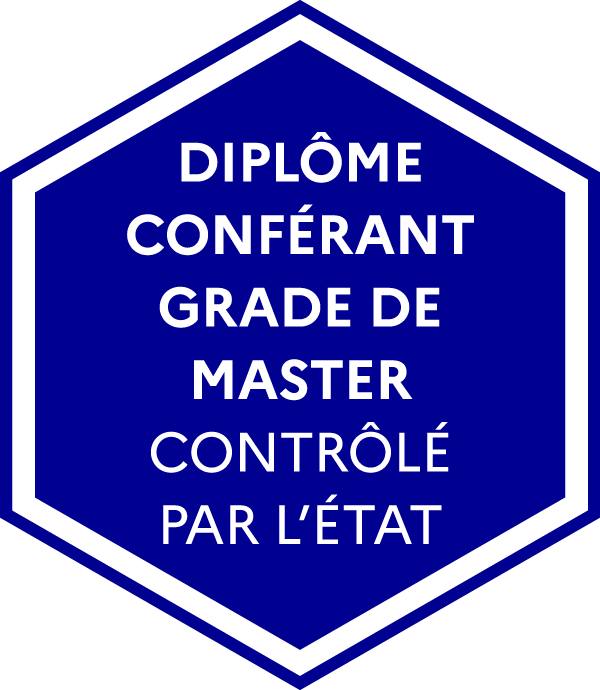Number of hours
- Lectures 40.0
- Projects -
- Tutorials -
- Internship -
- Laboratory works 20.0
ECTS
ECTS 5.0
Goal(s)
Ability for design and analysis of Hinfinity controlllers, robustness analysis, and the limits of the linearization, the analytical tools for nonlinear stability, and the basic principles of feedback control nonlinear state.
Olivier SENAME
Content(s)
ROBUST CONTROL COURSE
Introduction
Industrial examples (automotive and electromechanical applications).
1 Tools
Hinf norm: how to dene the gain of a MIMO system ?
Singular values of a transfer matrix, introduction to H2 and H1 norms.
Example of a mass/srping/damper system.
Internal stability: Notion of well-posedness, Small Gain theorem
2 Performance analysis
Denition of the sensitivity functions
frequency-domain performance indices (sensitivity functions, stability and robustness margins, bandwidth, SISO and MIMO cases)
3 Hinf control design
Performance Specications: selection of weighting functions.
Loop-shaping Mixed sensitivity problem.
Solving the Hinf control problem: Obtaining the General control conguration
Hinf controller structure (state feedback, dynamic output feedback)
Problem solution using Riccati equations or LMIs -Bounded Real Lemma)
Illustrative examples
4 Uncertainty and robustness
Representing uncertainties: unmodelled dynamics, frequency forms, unstructured uncertainties
Parametric uncertainties, LFT forms, structured uncertainties
Robust stability analysis: M structure, small gain theorem
Robust stability for unstructured uncertainties.
Robust performance analysis: A simplied Hinf criterion,
Introduction to mu-analysis - structured uncertainties
5 Introduction to LMIs
What is an Linear Matrix Inequality ? Brief optimisa-
tion background, Denition
Stability issue: From Lyapunov equation to LMIs
Control design: problem formulation: Example on
State feedback
6 Short introduction to LPV systems
Denition of Linear Parameter Varying systems, stability issue, control design
%%%%%%%%%%%%%%%%%%%%%%%%%%%%%%%%%%%%%%%%%%%%%%%%%%%%%%%%%%%%%%%%%%%%%%%%%%%%%%%%%%%%%%%%%%%%%%%%%%%%%%%%%%%%%%%%%%%%%%%%%%%%%%%%%%%%%%%%%%%%%%%%%%%%%%%%%%%%%%
Linear Systems, Transfer and state space approach, frequency and time-domain analysis
Exam
Homework
Project reports
Individual evaluation in Matlab tutorials
CC 50% + CT 50%
The exam may be taken in french or in english 

The course exists in the following branches:
- Curriculum - Master's Degree in Engineering ASI - Semester 9 (this course is given in english only
 )
)
Course ID : 5EUS5CNL
Course language(s): 
You can find this course among all other courses.
1. D. Alazard, C. Cumer, P. Apkarian, M. Gauvrit, and G. Ferreres. Robustesse et commande optimale. Cpadues Editions, 1999.
2. J.C. Doyle, B.A. Francis, and A.R. Tannenbaum. Feedback control theory. Macmillan Publishing Company, New York, 1992.
https://sites.google.com/site/brucefranciscontact/Home/publications
3. G. Duc and S. Font. Commande H1 et -analyse: des outils pour la robustesse. Herms, France, 1999.
4. G.C. Goodwin, S.F. Graebe, and M.E. Salgado. Control System Design. Prentice Hall, New Jersey, 2001.
csd.newcastle.edu.au
5. Scherer, C. and Wieland, S. (2004). Linear Matrix inequalities in Control. lecture support, DELFT University.
6. S. Skogestad and I. Postlethwaite. Multivariable Feedback Control: analysis and design. John Wiley and Sons, 2005.
www.nt.ntnu.no/users/skoge.
7. K. Zhou. Essentials of Robust Control. Prentice Hall, New Jersey, 1998. www.ece.lsu.edu/kemin
8. A. Isidori, Nonlinear control systems, 3rd Ed., Springer, 1995.
9. H. Khalil, Nonlinear systems, 3rd Ed., Prentice Hall, 2002.
French State controlled diploma conferring a Master's degree




